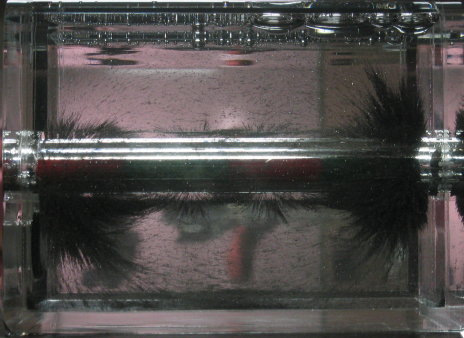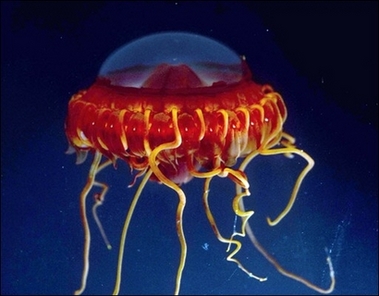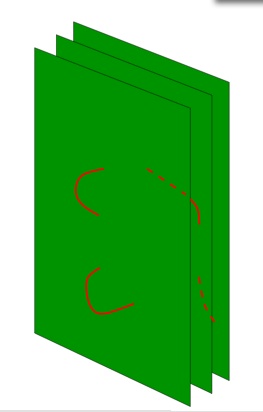[Post reconstructed after 25.10.07 hack]:
This is just great!
From the Norwegian Nobel Committee (remember, this prize does not come from the Swedish Academy):
The Norwegian Nobel Committee has decided that the Nobel Peace Prize for 2007 is to be shared, in two equal parts, between the Intergovernmental Panel on Climate Change (IPCC) and Albert Arnold (Al) Gore Jr. for their efforts to build up and disseminate greater knowledge about man-made climate change, and to lay the foundations for the measures that are needed to counteract such change.
This is simply fantastic, since I see it as a major step that a peace prize has been given for work on a scientific issue that affects our lives so profoundly. The IPCC was tasked with sifting through all the science on the matter, and present a thoughtful set of reports to guide governments, other organisations and individuals on the issue. This is a huge and important task that has been deservedly recognised by the committee. (My Correlations colleague Michael Tobis has more thoughts here.)
It could not stop there though. We live in a society where it is not enough to make a scientific case, since there are people and organizations that will try to confuse the issue for their own personal gains, and -most dismayingly- the vast majority of people are not going to be swayed by scientific arguments that they will never read, or take the time to understand, or consider as not personally relevant to their lives. This is where Al Gore (and others) comes in. You can read some of my recent thoughts about Al Gore’s role in all this in an earlier post entitled The Man of Tomorrow?, and so I won’t repeat all of that here, but here are some extracts:
[…] I’ve been very heartened by the pace of change that has happened in a short time with regards to people talking about the environment, and (some) people beginning to do something about it. Not become activists of the sack-cloth wearing sort, but merely thinking about the small things that individuals can do here and there that correspond to large changes when you add up the effort of millions. To begin thinking about changes to lifestyle and business practices that might make a real difference.
[…] So what is responsible for this pleasant change, this marked increase in awareness in the populace? At least in the USA (the environment’s worst offender – although it is being challenged for this dubious position by China), whether you like it or not we must point to Al Gore as being one of the principal messengers who has got the debate going on the street and in people’s households. It would be nice to think that it was all (or mostly) about people -under their own steam- stopping and weighing the arguments from scientists and other thinkers that were already out there for many years, but that’s largely a fantasy. A lot of it has to do […] Click to continue reading this post →




 Two Thursdays ago I went up to Santa Barbara to give a seminar. I had a great time, and it reminded me why it can be so much fun to go somewhere and visit for even a short time and do that. I got to catch up with several old friends, including Santa Barbara itself, where I lived for a number of years in the 90’s when I was a postdoc. I spent time chatting with the various people there before (at lunch) and after (individually) the seminar, learning about some of the research they’re doing, and also talking about other matters physics-wise and gossip-wise. I wish I’d had more time to talk since I did not get to talk to everyone I wanted to talk to, and not at as much length as I would have liked. (This was partly due to the fact that I spent the morning in my hotel room writing some of the slides for my talk. – I had a presentation the day before to focus on, along with a departmental visitor to host, and the day before I was also occupied. Don’t ask about any earlier than that – I never prepare new material that much in advance. Not because I don’t want to, but it just never happens… if I have more than a day or two, I will find that there’s other stuff I have to do.)
Two Thursdays ago I went up to Santa Barbara to give a seminar. I had a great time, and it reminded me why it can be so much fun to go somewhere and visit for even a short time and do that. I got to catch up with several old friends, including Santa Barbara itself, where I lived for a number of years in the 90’s when I was a postdoc. I spent time chatting with the various people there before (at lunch) and after (individually) the seminar, learning about some of the research they’re doing, and also talking about other matters physics-wise and gossip-wise. I wish I’d had more time to talk since I did not get to talk to everyone I wanted to talk to, and not at as much length as I would have liked. (This was partly due to the fact that I spent the morning in my hotel room writing some of the slides for my talk. – I had a presentation the day before to focus on, along with a departmental visitor to host, and the day before I was also occupied. Don’t ask about any earlier than that – I never prepare new material that much in advance. Not because I don’t want to, but it just never happens… if I have more than a day or two, I will find that there’s other stuff I have to do.) In my fog of too many things to do, I forgot to tell you about this event, which happens today at 5:30. I only remembered this morning as I dug a slightly better than normal shirt (for the event) out of the laundry pile and started to iron it:
In my fog of too many things to do, I forgot to tell you about this event, which happens today at 5:30. I only remembered this morning as I dug a slightly better than normal shirt (for the event) out of the laundry pile and started to iron it:














